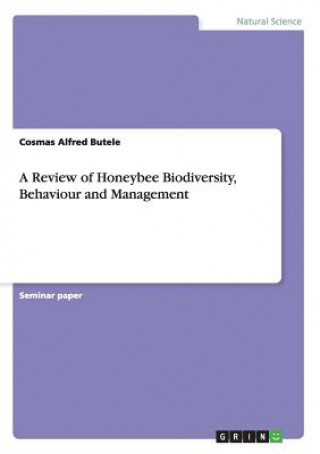
Kod: 05283743
Review of Honeybee Biodiversity, Behaviour and Management
Autor Cosmas A. Butele
Seminar paper from the year 2012 in the subject Biology - Zoology, grade: A, Atlantic International University (School of Science and Engineering), course: Master of Science (Applied Entomology), language: English, comment: Dear B ... więcej
- Język:
 Angielski
Angielski - Oprawa: Miękka
- Liczba stron: 40
Wydawca: Grin Publishing, 2013
- Więcej informacji o książce

Zobacz książki o podobnej tematyce
-

Activity Book: Environment Age 5+
15.22 zł -22 % -

Avicenna in Renaissance Italy
369.39 zł -

Children's Books and Their Illustrators
116.46 zł -

Data Analysis and Data Mining
664.47 zł -

Design and Analysis of Long-term Ecological Monitoring Studies
564.65 zł -15 % -

Defining the Family
167.84 zł -

Feminist Interpretations of Emmanuel Levinas
562.73 zł -9 %
Podaruj tę książkę jeszcze dziś
- Zamów książkę i wybierz "Wyślij jako prezent".
- Natychmiast wyślemy Ci bon podarunkowy, który możesz przekazać adresatowi prezentu.
- Książka zostanie wysłana do adresata, a Ty o nic nie musisz się martwić.
Więcej informacji o Review of Honeybee Biodiversity, Behaviour and Management
Za ten zakup dostaniesz 117 punkty
 Opis
Opis
Seminar paper from the year 2012 in the subject Biology - Zoology, grade: A, Atlantic International University (School of Science and Engineering), course: Master of Science (Applied Entomology), language: English, comment: Dear Butele: Excelent essay. "It's a big mistake also because, as I suggested earlier, educated people at the beginning of XXI century should be rationally founded confidence in the results of science, and rationally founded that confidence can only come from an adequate idea of scientific rationality, otherwise the trust is based only on the authority of science, and trust only authority is something that violates the rational and autonomous quality of the people". Olivé (2008, p. 77). Best regards, Dr ... Advisor. Atlantic International University. , abstract: Bees evolved in specific areas of the world long ago, before they spread to becomeglobally as they are today (Tables 1 and II), according to Kugonza (2009). As theyspread, they became adapted to the local ecological conditions of the different areas,changing in morphology and behaviour to fit within the requirements of the ecosystem,giving rise to a wide bee biodiversity of bee species and races we see today. Bees areclassified under Animal Kingdom, Phylum Arthropoda. They belong to Class Insecta,which is divided into 29 Orders. Bees belong to the order Hymenoptera, which has threeSuper families, namely: Apoidea (bees), Formicoidea (ants) and Vespoidea (wasps).There are around 30,000 named species of bees (Apoidea). Apoidea is further dividedinto several Families, namely Apidae (social bees), colletidae, Andrenidae, Halictidae,Melittidae, Megachilidae, and Anthophoridae. Most of the Families have solitaryindividuals: each female bee makes her own nest, lays a single egg and provides food forthe single larva that develops. However, a high level of social development is shown bythe species in Apidae where the individuals live together in a permanent, large colony,headed by a single egg-laying queen (BfD, 2003c). Apidae is composed of four genera:Apis (honeybees), Trigona and Melipona (stingless bees), and Bombus (bumble bees).According to MAAIF (2012a), the genus Apis is comprised of 5 main species of honeybees: Apis dorsata (the giant honey bee); Apis laboriosa (the darker giant honey bee);Apis florea (the little or dwarf honey bee); Apis cerana (formerly Apis indica), is theeastern hive honey bee; and Apis mellifera (western honey bee). These species haveevolved and differentiated into more species and races of honey bees. Kugonza (2009)described 9 species of honey bees in the world, which Oldroyd and Wongsiri (2006)grouped under 3 subgenera: Micrapis (Apis florea and A. andreniformis), Megapis (A.dorsata and A. laboriosa) and Apis (A. cerana, recently recognized as separate races ofA. nigrocinta, A. koschevnikovi and A. nuluensis, and A. mellifera). Dietz (1992), Hussein(2000) and Wikipedia (2012) described over 28 races of A. mellifera alone. Beekeepingstarted with honey bees (Apis species), a practice called Apiculture, although keeping ofstingless bees, belonging to the genera Trigona and Melipona, a practice calledMeliponiculture, has recently picked up [...]
 Szczegóły książki
Szczegóły książki
Kategoria Książki po angielsku Mathematics & science Biology, life sciences Zoology & animal sciences
203.17 zł
- Pełny tytuł: Review of Honeybee Biodiversity, Behaviour and Management
- Autor: Cosmas A. Butele
- Język:
 Angielski
Angielski - Oprawa: Miękka
- Liczba stron: 40
- EAN: 9783656374138
- ISBN: 3656374139
- ID: 05283743
- Wydawca: Grin Publishing
- Waga: 64 g
- Wymiary: 210 × 148 × 4 mm
- Data wydania: 21. February 2013
Ulubione w innej kategorii
-
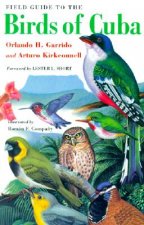
Field Guide to the Birds of Cuba
121.33 zł -8 % -
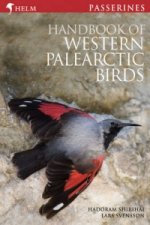
Handbook of Western Palearctic Birds
635.94 zł -19 % -

Bach Flower Remedies For Animals
93.91 zł -23 % -

Mammals of Costa Rica
121.33 zł -8 % -

Wolves
159.92 zł -

Birds of Japan
157.48 zł -10 % -

Birds of Argentina and Southwest Atlantic V 1
167.63 zł -9 % -

Fishes of Indiana
101.73 zł -4 % -

End of the Megafauna
144.68 zł -6 % -

Reef Fish Identification
190.99 zł -9 % -

Essentials of Clinical Anatomy of the Equine Locomotor System
375.49 zł -

Complete Illustrated Encyclopedia of Birds of the World
94.12 zł -23 % -

Complete Field Guide to Butterflies of Australia
208.55 zł -
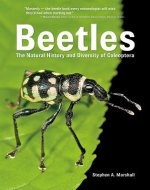
Beetles
301.97 zł -23 % -

Wisdom of Wolves
104.37 zł -11 % -

In The Shadow Of Man
70.46 zł -10 % -

Butterflies of North America
263.18 zł -6 % -

Anatomy of the Horse
329.49 zł -9 % -

Centipedes in Captivity
333.65 zł -

Nature of Horses
47.71 zł -23 % -

Rise of Marine Mammals
403.92 zł -
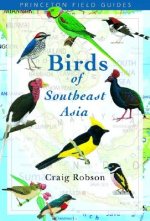
Birds of Southeast Asia
140.83 zł -8 % -
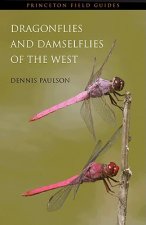
Dragonflies and Damselflies of the West
132.70 zł -7 % -

Comparative Osteology
331.72 zł -

Handbook of Larval Amphibians of the United States and Canada
472.35 zł -

Bumblebees
152.30 zł -
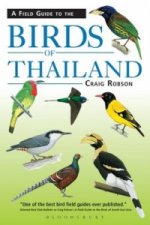
Field Guide to the Birds of Thailand
202.26 zł -4 % -

Field Guide to the Birds of Hawaii and the Tropical Pacific
215.56 zł -7 % -

RSPB Guide to Birdsong
83.56 zł -20 % -

Why Big Fierce Animals Are Rare
78.68 zł -9 % -

Principles of Thermal Ecology: Temperature, Energy and Life
409.70 zł -

Sea Shells of India
232.01 zł -

Dance Language and Orientation of Bees
353.65 zł -

Solitary wasps
152.30 zł -

Prairie Dog Empire
90.36 zł -9 % -
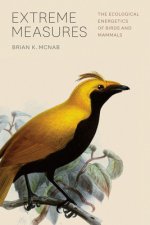
Extreme Measures - The Ecological Energetics of Birds and Mammals
254.55 zł -

National Audubon Society Guide to Marine Mammals of the World
157.48 zł -10 % -

Tracks and Signs of the Animals and Birds of Britain and Europe
97.27 zł -12 % -

Chimpanzee Politics
172.71 zł -

Aqualog Freshwater Rays
109.65 zł -14 % -
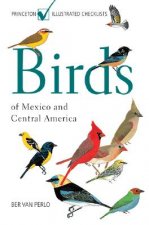
Birds of Mexico and Central America
129.05 zł -9 % -

Fishes of the Maldives
237.09 zł -

Birds of Central Asia
216.68 zł -4 % -
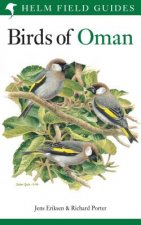
Birds of Oman
188.04 zł -5 % -

Rabbit Behaviour, Health and Care
126.51 zł -9 % -

Turtles of the World
301.26 zł -

Are You My Mother?
45.89 zł -6 % -
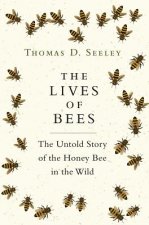
Lives of Bees
140.83 zł -8 % -
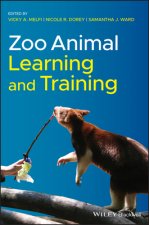
Zoo Animal Learning and Training
342.48 zł
zadowolonych klientów
Od roku 2008 obsłużyliśmy wielu miłośników książek, ale dla nas każdy był tym wyjątkowym.
Copyright! ©2008-24 libristo.pl Wszelkie prawa zastrzeżonePrywatnieCookies



 21 milionów książek
21 milionów książek Dostawa 10.99 zł
Dostawa 10.99 zł (32) 444 93 66 (8-15.30h)
(32) 444 93 66 (8-15.30h)